The B-flat Key
The Bb key is the top thumb key on the back of the boot joint (the side you can see when you play).
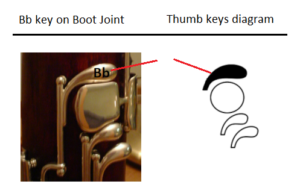
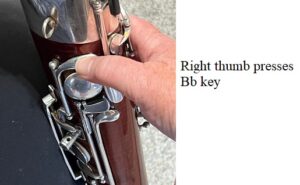
Tip: Use the pad of your thumb closer to the tip than the knuckle. This will help keep a soft curve in your thumb which will help it move to another key with speed and accuracy.
Middle Bb Fingering
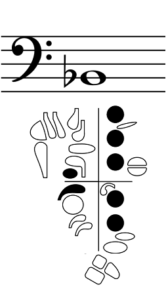
Use your right thumb to press the B-flat (Bb) key on the back of the boot joint and cover both open tone holes (B and A) on the front of the boot joint.
Tip: Thinking of Bb as A# can help you remember to “finger A and raise the note a half step by adding the A# key.” If you finger B-natural and add the Bb key, you’ll get a sound, but it will not be a Bb.
Matching Pitch
Play Matching Pitch with a perfect fifth drone on Bb-F.

Playing Bb to C
Moving between Bb and C requires moving three fingers so you will need to work on coordinating all three fingers so that they lift and press as a unit. Keep your fingers soft and light.

F major – One Octave
Practice the scale slowly with an F-C drone.
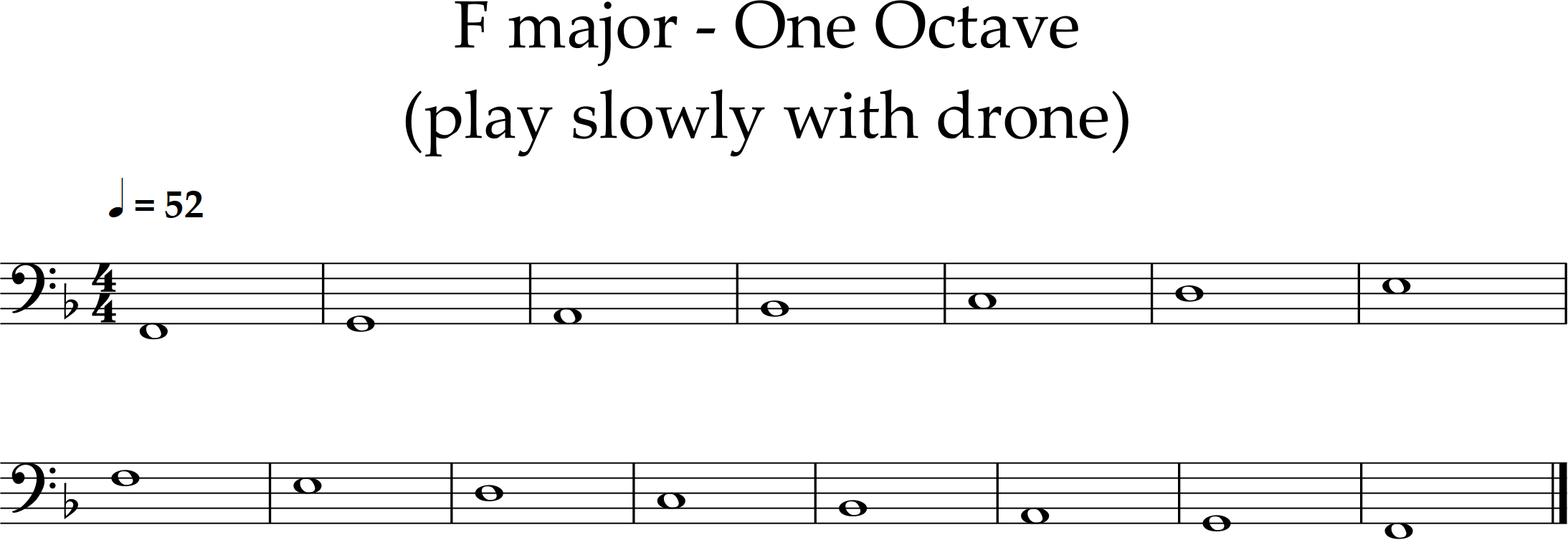
Now practice the scale in shorter note lengths to work on your finger coordination but keep listening for intonation.

Long, Long Ago
This tune includes breath marks for phrasing (the checkmark every four bars) and introduces four new signs/instructions.
Play the ties in bars 8 and 12 by articulating the low F on beat one and holding it until beat 4.
The three other signs tell you about the form of the piece. Start at the beginning and play through to the last bar. Notice there is no final bar line at the end. The instruction “D. S. to Fine” means to go back to the bar with the
sign  and play to the Fine. Notice the final bar line at the Fine. Stop there.
and play to the Fine. Notice the final bar line at the Fine. Stop there.
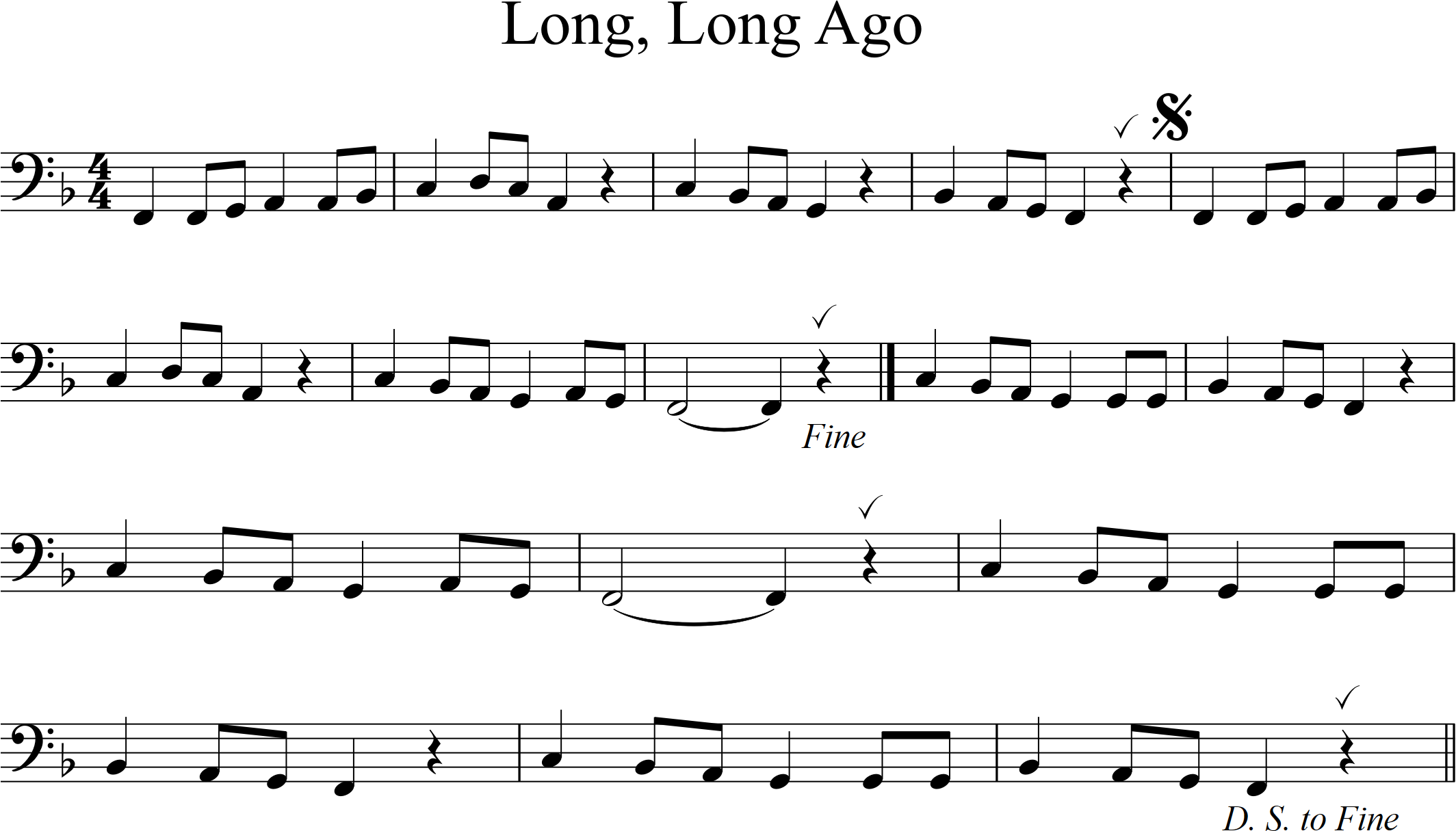
Lightly Row
Listen to the quality of your articulation when playing Lightly Row. Are you getting the sound and clarity you want? Notice the force of your tongue against the reed. A marcato articulation requires more force with the tongue, and leggiero needs only a light flick of the tongue against the reed. Experiment with playing this in marcato style and leggiero style.
Tip: Keep your air support steady and make sure your tongue touches the reed at the beginning of every note.

Gavotte by Jacques Aubert (Faber Music, arr. L. Hilling and W. Bermann)
- Level 1 NYSSMA Solo for bassoon and piano
- Gavotte is a dance from the 1700s
- C stands for Common Time and is another way to write 4/4 meter
- 4 beats per bar, quarter note gets the beat
- One octave range
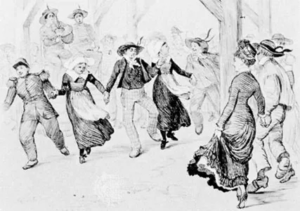
“Gavotte,” illustration by Randolph Caldecott from Bretonfolk
Courtesy of the Victoria and Albert Museum, London
Britannica, T. Editors of Encyclopaedia (2019, January 22). gavotte. Encyclopedia Britannica. https://www.britannica.com/art/gavotte
This piece includes a slur marking in almost every bar. To play these slurs you will articulate the first note of the slurred group and then first note after the slur ends. In the first half bar you should articulate the first A and again on the second A. Do not articulate the low G. In the second full bar 3 you will articulate the two quarter notes and the first C eighth note and the last two eighth notes of the bar. Do not articulate the D eighth note.
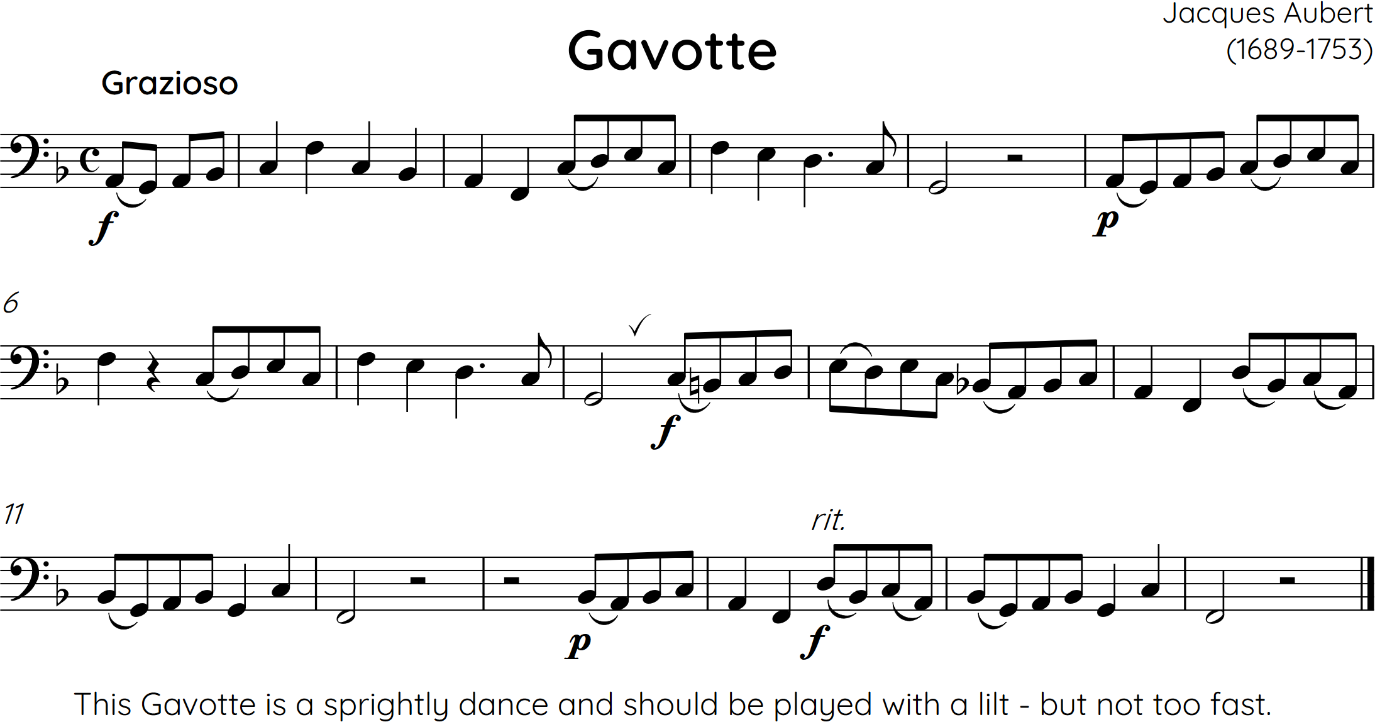
The meter and rhythms are simple. However, there are some tricky finger combinations.
Practice Tip: Isolate & Repeat
If you struggle with a passage from this piece, play it through slowly and find out which two or three notes are creating the problem (probably the notes where the most fingers are moving). Isolate those two or three notes and repeat them slowly while focusing on finger coordination. Let your fingers soften and relax as they get used to the motion. Once the pattern can be played cleanly with minimal effort you can gradually increase the speed of the repetitions.
The exercises below are practice suggestions for Aubert’s Gavotte. Start slowly and repeat each pattern until your fingers move easily between the notes. The notes in each bar are all under a slur so only articulate the first note in each bar.
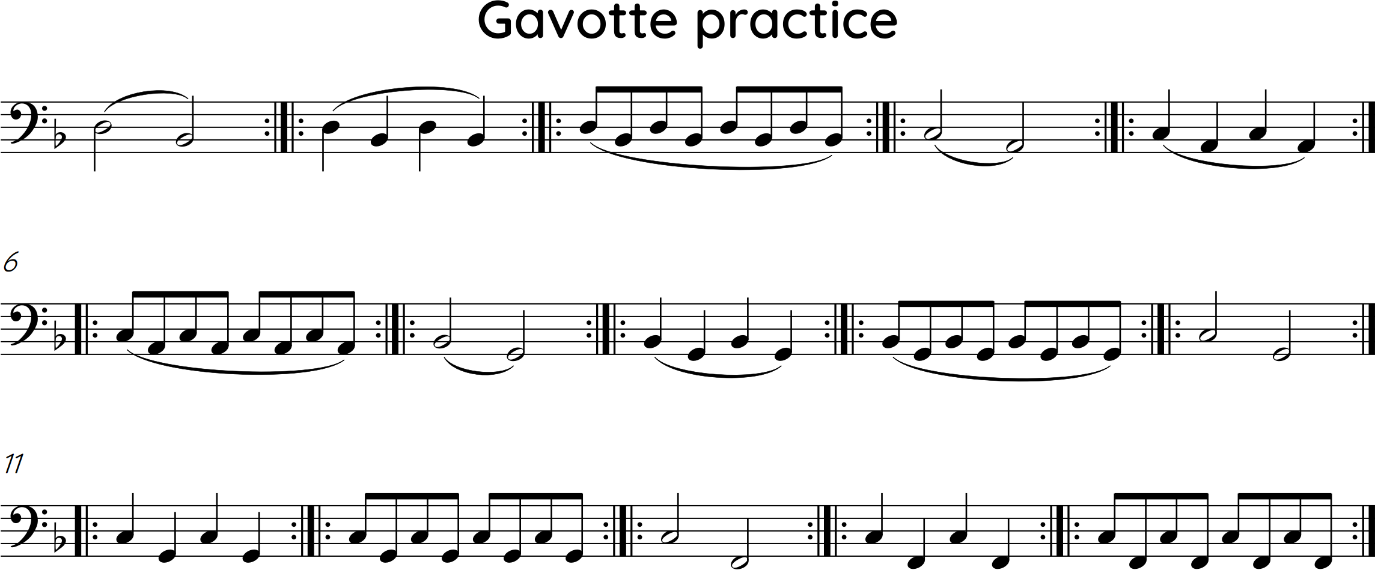



Feedback/Errata